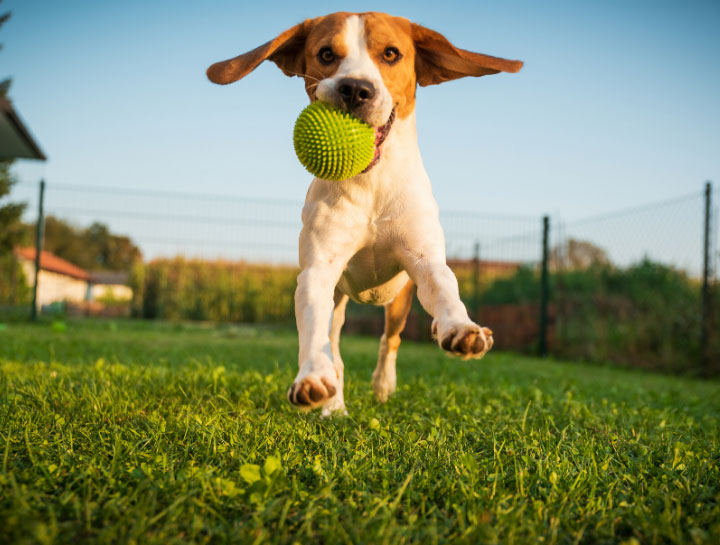
Pet Daycare Safety: Ensuring Your Pet's Well-being in Las Vegas
Pet daycare facilities provide essential care and socialization for pets when their owners are at work or away. However, ensuring safety at these facilities is crucial for maintaining your pet's well-being. Without proper safety measures, pets are exposed to risks such as injury, illness, or stress.
A well-managed daycare facility prioritizes the health and safety of every animal, implementing strict protocols to prevent accidents and illnesses. Understanding these safety measures helps you make informed decisions about where to entrust your pet. This knowledge not only ensures your pet’s safety but also gives you peace of mind while you’re away.
Choosing a Safe Pet Daycare Facility
When selecting a pet daycare facility, thorough research is essential to ensure your pet’s safety and well-being. Start by gathering information from various sources to make an informed decision.
Online Reviews and Ratings
Online reviews and ratings are valuable tools for assessing the reputation of a pet daycare. Check websites like Yelp, Google Reviews, and specialized pet care forums for feedback from other pet owners. Look for patterns in the reviews, such as consistent praise or recurring complaints about cleanliness, staff behavior, or overall care. High ratings and positive testimonials are good indicators of a reliable facility. However, be cautious of facilities with few reviews or an unusually high number of negative comments.
Recommendations and Referrals
Word-of-mouth recommendations from friends, family, or your veterinarian can provide trustworthy insights into local pet daycares. Ask fellow pet owners about their experiences and which facilities they trust. Personal referrals often offer honest, firsthand accounts of the quality of care and overall experience, giving you a clearer picture of what to expect.
Essential Safety Protocols and Practices
A reputable pet daycare facility requires that all pets have up-to-date vaccinations. Essential vaccinations typically include those for rabies, distemper, parvovirus, and Bordetella (kennel cough). Some facilities may also require vaccinations for leptospirosis or other diseases depending on local risks. Regular health checks are also crucial. Facilities should ensure that pets are free from contagious illnesses and parasites before admission.
Handling Illnesses and Injuries
Daycare staff should be trained to recognize and manage common health issues. This includes observing signs of illness or injury, such as lethargy, vomiting, or limping. Facilities must have protocols for isolating sick pets and contacting a veterinarian promptly. They should also keep detailed records of any incidents or health concerns and communicate these to pet owners.
Emergency Procedures
A well-prepared facility has clear protocols for handling emergencies. This includes plans for natural disasters like earthquakes or fires, as well as medical emergencies. The facility should have marked exits, fire extinguishers, and first aid kits readily available. Staff should be trained in emergency response, including evacuation procedures and administering basic first aid.
Access to Veterinary Care
Immediate access to veterinary care is crucial in emergencies. The facility should have a partnership with a local veterinarian or animal hospital. Ask about their procedure for handling emergencies that require urgent medical attention. This includes how they transport pets to the vet and how quickly they can initiate care. Knowing that your pet can receive prompt medical attention if needed provides peace of mind.

Safe Play Areas
The design of play and rest areas significantly impacts safety. Play areas should be spacious and securely fenced to prevent pets from escaping. Equipment should be safe and well-maintained, with no sharp edges or broken parts that could cause injury. Rest areas should provide comfortable and clean bedding. Adequate shade and hydration stations are essential to protect pets from overheating, especially in Las Vegas’ extreme temperatures.
Hygiene and Pest Control
Maintaining a clean environment is fundamental to pet health. The facility should have a rigorous cleaning schedule to sanitize play areas, bedding, and food bowls. Effective pest control measures should be in place to prevent infestations of fleas, ticks, or other pests. Regular inspections and maintenance of the facility’s hygiene practices help prevent the spread of diseases and ensure a safe environment for all pets.
What to Do If Problems Arise
If you notice any safety concerns or issues at your pet’s daycare facility, it's essential to address them promptly. Start by documenting the problem in detail, including dates, times, and descriptions of the incidents. Report the issue to the facility’s management immediately, either in writing or verbally. Many facilities have specific procedures for handling complaints, so ask about their formal process. Ensure that your concerns are acknowledged and addressed in a timely manner.
Escalating Issues
If the facility does not resolve the problem to your satisfaction, consider escalating the issue. Contact local animal control or regulatory authorities to report any serious safety violations or neglect. Additionally, you can reach out to organizations like the Pet Care Services Association for guidance. These bodies can provide support and investigate if necessary, helping to ensure that your concerns are taken seriously and addressed appropriately.
Switching Daycares
If the issues persist or you are not comfortable with how they are handled, it may be time to consider switching facilities. Start by researching and visiting alternative daycares, using the same thorough process as outlined previously. Check reviews, visit the facility, and assess their safety protocols to ensure they meet your standards.
Avoiding Past Issues
When evaluating new facilities, discuss your previous concerns with the new staff. This helps you gauge their responsiveness and commitment to addressing potential issues. Ask about their specific safety measures and how they handle incidents to ensure that they have robust protocols in place. By being transparent about your past experiences, you can find a daycare that better meets your expectations and keeps your pet safe.
Wrapping Up
Ensuring your pet's safety in a daycare facility involves several crucial steps. Start with thorough research, including checking online reviews, seeking recommendations, and visiting facilities to assess cleanliness, staff qualifications, and safety protocols. Ensure that the facility adheres to health and safety standards, including required vaccinations and emergency preparedness. Evaluate facility design and maintenance to confirm that play and rest areas are safe and well-maintained.
Informed decision-making plays a critical role in safeguarding your pet. By diligently researching and monitoring daycare facilities, you can ensure a safe and positive environment for your pet. Your proactive approach will contribute significantly to your pet’s happiness and health while you’re away.

